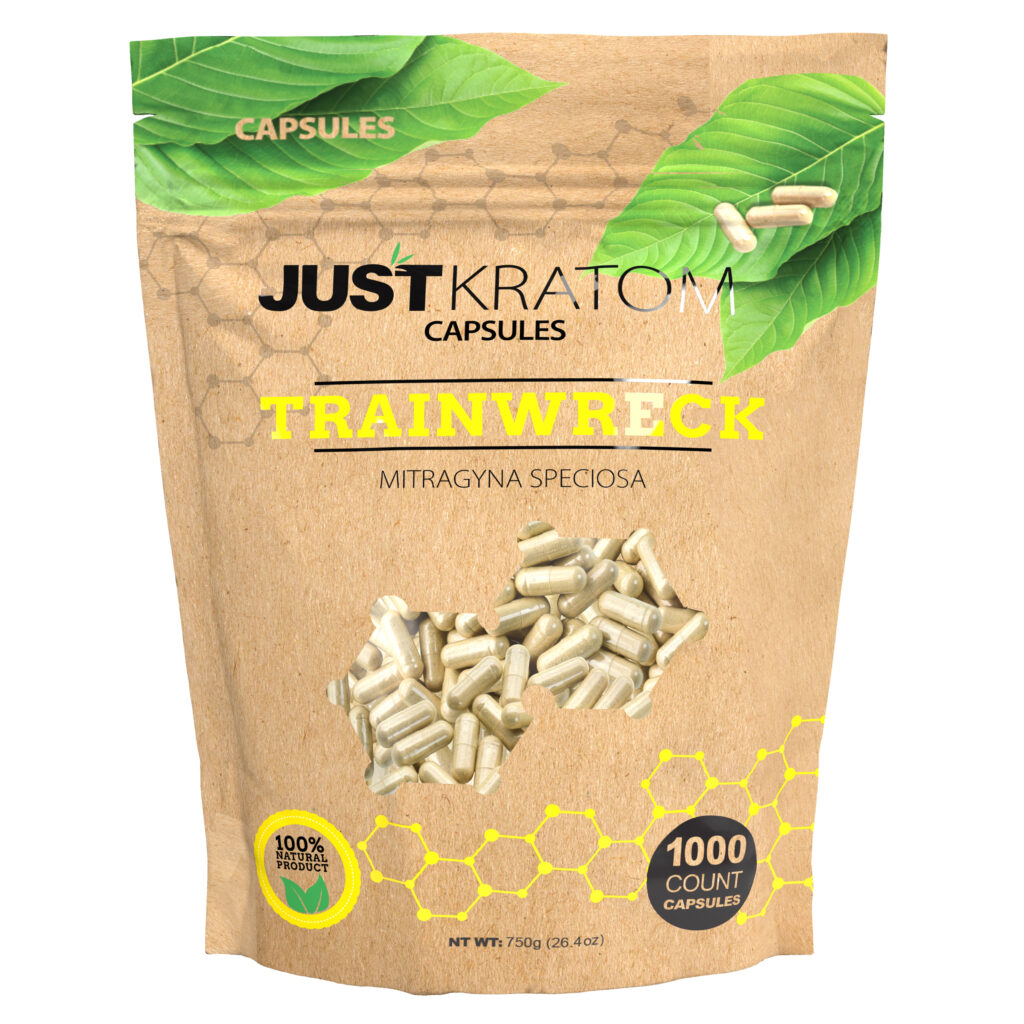Kratom as a Migraine Treatment
Migraines are debilitating headaches that affect millions worldwide, often accompanied by nausea, sensitivity to light and sound, and severe throbbing pain. Traditional treatments include medications, but many sufferers seek alternative therapies. Kratom, a tropical tree leaf containing psychoactive alkaloids, has gained traction as a potential migraine remedy due to its reported pain-relieving and mood-boosting effects.
Mechanism of Action
While anecdotal evidence suggests that kratom may help alleviate migraine symptoms, scientific research on its efficacy for this purpose is limited. Kratom’s potential mechanism of action in treating migraines is thought to involve the interaction of its alkaloids with opioid receptors in the brain. These alkaloids, particularly mitragynine and 7-hydroxymitragynine, are believed to exert analgesic (pain-relieving) effects by mimicking the actions of endorphins, the body’s natural pain relievers.
However, further research is needed to fully understand kratom’s mechanism of action in migraine treatment and to determine its safety and efficacy compared to established therapies. It’s important to note that kratom use can have potential side effects and risks, and it should be approached with caution. Consultation with a healthcare professional is essential before using kratom for any health condition.
Available Evidence
Migraines are debilitating headaches that affect millions worldwide, often accompanied by nausea, sensitivity to light and sound, and severe throbbing pain. Traditional treatments include medications, but many sufferers seek alternative therapies. Kratom, a tropical tree leaf containing psychoactive alkaloids, has gained traction as a potential migraine remedy due to its reported pain-relieving and mood-boosting effects.
While anecdotal evidence suggests that kratom may help alleviate migraine symptoms, scientific research on its efficacy for this purpose is limited. Kratom’s potential mechanism of action in treating migraines is thought to involve the interaction of its alkaloids with opioid receptors in the brain. These alkaloids, particularly mitragynine and 7-hydroxymitragynine, are believed to exert analgesic (pain-relieving) effects by mimicking the actions of endorphins, the body’s natural pain relievers.
However, further research is needed to fully understand kratom’s mechanism of action in migraine treatment and to determine its safety and efficacy compared to established therapies. It’s important to note that kratom use can have potential side effects and risks, and it should be approached with caution. Consultation with a healthcare professional is essential before using kratom for any health condition.
Studies on Kratom for Migraines

Migraines are debilitating headaches that affect millions worldwide, often accompanied by nausea, sensitivity to light and sound, and severe throbbing pain. Traditional treatments include medications, but many sufferers seek alternative therapies. Kratom, a tropical tree leaf containing psychoactive alkaloids, has gained traction as a potential migraine remedy due to its reported pain-relieving and mood-boosting effects.
While anecdotal evidence suggests that kratom may help alleviate migraine symptoms, scientific research on its efficacy for this purpose is limited. Kratom’s potential mechanism of action in treating migraines is thought to involve the interaction of its alkaloids with opioid receptors in the brain. These alkaloids, particularly mitragynine and 7-hydroxymitragynine, are believed to exert analgesic (pain-relieving) effects by mimicking the actions of endorphins, the body’s natural pain relievers.
However, further research is needed to fully understand kratom’s mechanism of action in migraine treatment and to determine its safety and efficacy compared to established therapies. It’s important to note that kratom use can have potential side effects and risks, and it should be approached with caution. Consultation with a healthcare professional is essential before using kratom for any health condition.
Potential Benefits of Kratom for Migraines
Migraines are a debilitating neurological condition characterized by severe headaches often accompanied by nausea, sensitivity to light and sound, and other debilitating symptoms. Traditional treatments like medications can be effective, but some individuals seek alternative therapies for migraine relief. Kratom, a tropical tree leaf containing psychoactive alkaloids, has gained attention as a potential natural remedy due to its reported pain-relieving and mood-boosting effects.
Pain Relief
Kratom contains alkaloids that may interact with opioid receptors in the brain, similar to how endorphins work. These alkaloids, mitragynine and 7-hydroxymitragynine, are believed to contribute to kratom’s potential analgesic (pain-relieving) effects.
While anecdotal reports suggest kratom may help alleviate migraine symptoms, scientific research on its effectiveness for migraines is limited. More studies are needed to determine the safety and efficacy of kratom compared to established migraine treatments.
Nausea and Vomiting Reduction
Migraines are a debilitating neurological condition characterized by severe headaches often accompanied by nausea, sensitivity to light and sound, and other debilitating symptoms. Traditional treatments like medications can be effective, but some individuals seek alternative therapies for migraine relief. Kratom, a tropical tree leaf containing psychoactive alkaloids, has gained attention as a potential natural remedy due to its reported pain-relieving and mood-boosting effects.
Kratom contains alkaloids that may interact with opioid receptors in the brain, similar to how endorphins work. These alkaloids, mitragynine and 7-hydroxymitragynine, are believed to contribute to kratom’s potential analgesic (pain-relieving) effects.
While anecdotal reports suggest kratom may help alleviate migraine symptoms, scientific research on its effectiveness for migraines is limited. More studies are needed to determine the safety and efficacy of kratom compared to established migraine treatments.
Improved Mood
Migraines are a debilitating neurological condition characterized by severe headaches often accompanied by nausea, sensitivity to light and sound, and other debilitating symptoms. Traditional treatments like medications can be effective, but some individuals seek alternative therapies for migraine relief. Kratom, a tropical tree leaf containing psychoactive alkaloids, has gained attention as a potential natural remedy due to its reported pain-relieving and mood-boosting effects.
Kratom contains alkaloids that may interact with opioid receptors in the brain, similar to how endorphins work. These alkaloids, mitragynine and 7-hydroxymitragynine, are believed to contribute to kratom’s potential analgesic (pain-relieving) effects.
While anecdotal reports suggest kratom may help alleviate migraine symptoms, scientific research on its effectiveness for migraines is limited. More studies are needed to determine the safety and efficacy of kratom compared to established migraine treatments.

Risks and Side Effects of Kratom Use
Kratom, a tropical tree leaf containing psychoactive alkaloids, has gained attention as a potential treatment for migraines due to reported pain-relieving and mood-boosting effects. However, it’s crucial to understand that kratom use carries potential side effects and risks. These can include nausea, constipation, dizziness, and in some cases, more serious issues like liver damage and addiction.
Dosage Considerations
Kratom is not without its risks and potential side effects. Common side effects can include nausea, constipation, dizziness, and itching. In some cases, kratom use has been linked to more serious health problems, such as liver damage, seizures, and respiratory depression. Kratom can also be addictive, and prolonged use may lead to dependence.
Dosage considerations are crucial when using kratom. The appropriate dose varies depending on individual factors like body weight, metabolism, and experience with kratom. It’s essential to start with a low dose and gradually increase it as needed while monitoring for any adverse effects. Overdosing on kratom can be dangerous and may lead to severe health complications.
Interactions with Medications
Kratom is not without its risks and potential side effects. Common side effects can include nausea, constipation, dizziness, and itching. In some cases, kratom use has been linked to more serious health problems, such as liver damage, seizures, and respiratory depression. Kratom can also be addictive, and prolonged use may lead to dependence.
Dosage considerations are crucial when using kratom. The appropriate dose varies depending on individual factors like body weight, metabolism, and experience with kratom. It’s essential to start with a low dose and gradually increase it as needed while monitoring for any adverse effects. Overdosing on kratom can be dangerous and may lead to severe health complications.
Kratom can interact with various medications, potentially leading to adverse effects or reduced effectiveness of the medication. It’s important to inform your healthcare provider about all medications you are taking, including over-the-counter drugs and supplements, before using kratom.
Interactions may occur with opioids, antidepressants, antipsychotics, blood thinners, and medications for liver disease. The risks associated with these interactions can vary depending on the specific medication and individual factors.
Withdrawal Symptoms
Kratom is not without its risks and potential side effects. Common side effects can include nausea, constipation, dizziness, and itching.
In some cases, kratom use has been linked to more serious health problems, such as liver damage, seizures, and respiratory depression. Kratom can also be addictive, and prolonged use may lead to dependence.
Withdrawal symptoms from kratom can be uncomfortable and may include:

– Nausea
– Vomiting
– Muscle aches
– Diarrhea
– Irritability
– Anxiety
– Fatigue
It’s important to note that kratom is not FDA-approved for any medical use, and its safety and long-term effects are not fully understood.
Legal Status of Kratom
The legal status of kratom varies widely around the world. In some countries, it is completely banned, while in others it is legal but regulated. In the United States, kratom’s legal standing is complex and subject to change at both the federal and state levels. Some states have outright bans on kratom, while others have implemented regulations regarding its sale and possession.
Regulation in Different Countries
The legal status of kratom varies widely around the world. In some countries, it is completely banned, while in others it is legal but regulated.
- **United States:** Kratom’s legal status is complex and subject to change at both the federal and state levels.
- **Europe:** Kratom is largely illegal in most European Union countries.
- **Australia:** Kratom is classified as a restricted substance and is illegal to possess or sell without a permit.
- **Thailand:** Kratom is native to Thailand but was banned there in 2017 due to concerns about its potential for abuse.
- **Indonesia:** Kratom use is traditional in Indonesia, but it has been increasingly restricted in recent years.
The legal landscape surrounding kratom continues to evolve, making it essential for individuals to stay informed about the laws in their respective countries or jurisdictions.
Potential for Legal Issues
Kratom’s legal status is complex and varies significantly across the globe. Some countries have completely banned it, while others allow its use under specific regulations. In the United States, kratom exists in a legal gray area with a patchwork of state-level laws.
At the federal level, kratom is not explicitly banned but faces scrutiny from regulatory agencies like the FDA. However, certain states have implemented outright bans on kratom sales and possession, while others have adopted regulations governing its sale, labeling, and quality control. This patchwork of regulations creates uncertainty for consumers and businesses alike.
Individuals considering using kratom should carefully research the laws in their specific location to ensure compliance and avoid potential legal repercussions.
Alternatives to Kratom for Migraine Treatment
Migraines are debilitating headaches that affect millions worldwide, often accompanied by nausea, sensitivity to light and sound, and severe throbbing pain. Traditional treatments include medications, but many sufferers seek alternative therapies. Kratom, a tropical tree leaf containing psychoactive alkaloids, has gained traction as a potential migraine remedy due to its reported pain-relieving and mood-boosting effects. While anecdotal evidence suggests that kratom may help alleviate migraine symptoms, scientific research on its efficacy for this purpose is limited. There are other alternative therapies for migraines that may be worth exploring.
Prescription Medications
While Kratom shows promise as a potential migraine treatment, it’s essential to consider prescription medications proven effective against migraines.
These include:
- Triptans: These medications work by constricting blood vessels in the brain and blocking pain signals, often providing rapid relief from migraine symptoms.
- Ergots: Another class of medications similar to triptans, ergots also help reduce migraine pain and associated symptoms.
- Anti-Nausea Medications: Such as prochlorperazine or ondansetron, can be helpful for managing nausea often accompanying migraines.
- Anti-Inflammatory Drugs (NSAIDs)**: Over-the-counter pain relievers like ibuprofen or naproxen can be effective in treating mild to moderate migraine headaches.
Prescription medications offer a more reliable and controlled approach to migraine management compared to alternative therapies like kratom. Always consult with your healthcare provider to determine the most suitable treatment plan for your individual needs and medical history.
Alternative Therapies
Migraines are debilitating headaches that affect millions worldwide, often accompanied by nausea, sensitivity to light and sound, and severe throbbing pain. Traditional treatments include medications, but many sufferers seek alternative therapies. While kratom has gained traction as a potential migraine remedy due to its reported pain-relieving and mood-boosting effects, scientific research on its efficacy for migraines is limited.
Here are some alternative therapies that may be worth exploring:
* **Biofeedback:** This technique involves learning to control bodily functions like heart rate, muscle tension, and skin temperature. By practicing biofeedback, individuals can gain better control over migraine triggers and potentially reduce their frequency and severity.
* **Acupuncture:** This traditional Chinese medicine practice involves inserting thin needles into specific points on the body to stimulate energy flow and promote healing. Some studies suggest that acupuncture may be effective in reducing migraine pain and improving overall well-being.
* **Massage Therapy:** Regular massages can help relieve muscle tension, which is often a trigger for migraines. Techniques like Swedish massage or deep tissue massage may provide relief from headache pain and associated symptoms.
* **Yoga and Meditation:** These practices can promote relaxation, reduce stress, and improve overall well-being, potentially contributing to fewer migraines.
It’s crucial to consult with a healthcare professional before trying any alternative therapy for migraines. They can help determine the most appropriate treatment options based on your individual needs and medical history.
Shop Just Kratom Kratom capsules for better focus
- How To Plan A Vacation Around Your Non-Surgical Bum Lift Recovery - April 28, 2025
- Aesthetic Cosmetic Injectable Treatments Near Gatton, Surrey - April 27, 2025
- Are Kratom Capsules Effective For Treating Migraines? - April 27, 2025
